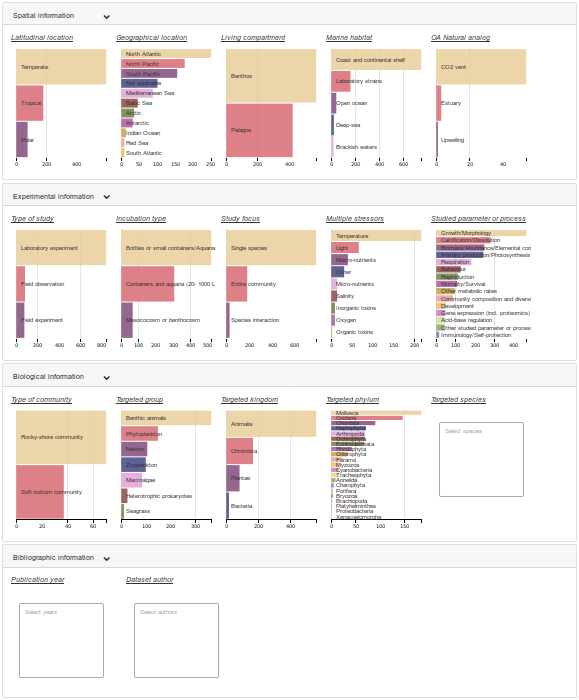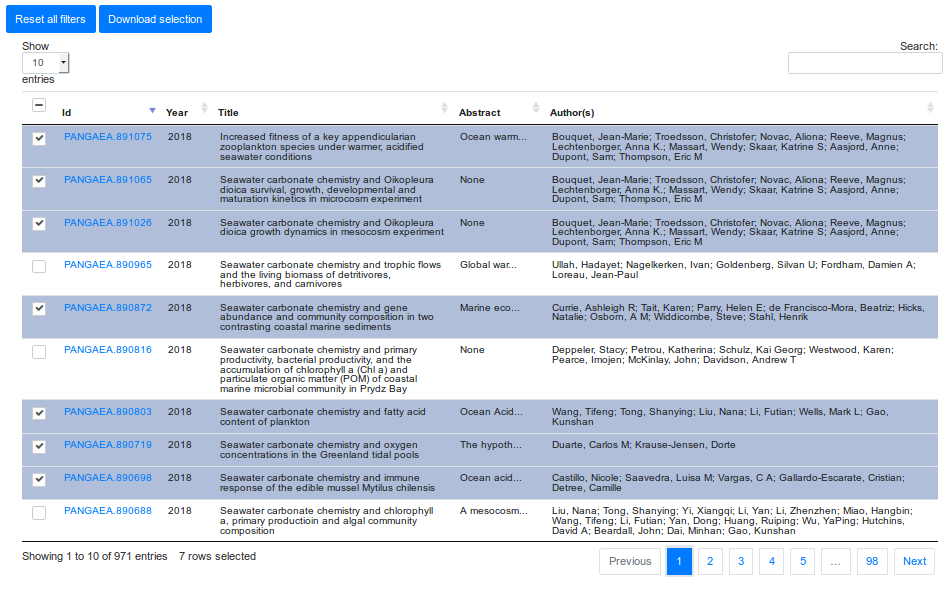OA-ICC team
- Yan Yang
OA-ICC Data Curator, State Key Laboratory of Marine Environmental Science, China
- Frédéric Gazeau
OA-ICC focal point for data management, Laboratoire d'Océanographie de Villefranche-sur-Mer (CNRS-SU), France
- Carolina Galdino
OA-ICC Project Assistant (Coordination and Networking), IAEA Environment Laboratories, Principality of Monaco
- Ashley Bantelman
OA-ICC Project Officer, IAEA Environment Laboratories, Principality of Monaco
Data and web engineering
- Patrick Brockmann
Data scientist and web developper, Laboratory for Sciences of Climate and Environment, France
Acknowledgements
This effort was initiated by Jean-Pierre Gattuso, Laboratoire d'océanographie de Villefranche (CNRS/SU), France, as part of the EU projects EUR-OCEANS and EPOCA.
We would like to thank previous contributors to the data compilation :
- Trevor Eakes (IAEA Environment Laboratories, Principality of Monaco)
- Lina Hansson (IAEA Environment Laboratories, Principality of Monaco)
- Marine Lebrec (IAEA Environment Laboratories, Principality of Monaco)
- Anne-Marin Nisumaa (funding through EPOCA and OA-ICC)
- Nassim Taalba (funding through EUR-OCEANS)
Thank you to the members of the SOLAS IMBER Ocean Acidification Working Group (SIOA) for fruitful discussions.
Ressources
The data compilation is described in the following articles :
- Yang Y., Hansson L. & Gattuso J.-P., 2016. Data compilation on the biological response to ocean acidification : an update. Earth System Science Data 8:79-87. Link to : https://www.earth-syst-sci-data.net/8/79/2016
- Nisumaa, A.-M., Pesant, S., Bellerby, R. G. J., Delille, B., Middelburg, J. J., Orr, J. C., Riebesell, U., Tyrrell, T., Wolf-Gladrow, D. & Gattuso, J.-P., 2010. EPOCA/EUR-OCEANS data compilation on the biological and biogeochemical responses to ocean acidification. Earth System Science Data 2(2) : 167-175. Link to : https://www.earth-syst-sci-data.net/2/167/2010
Additional resources :







